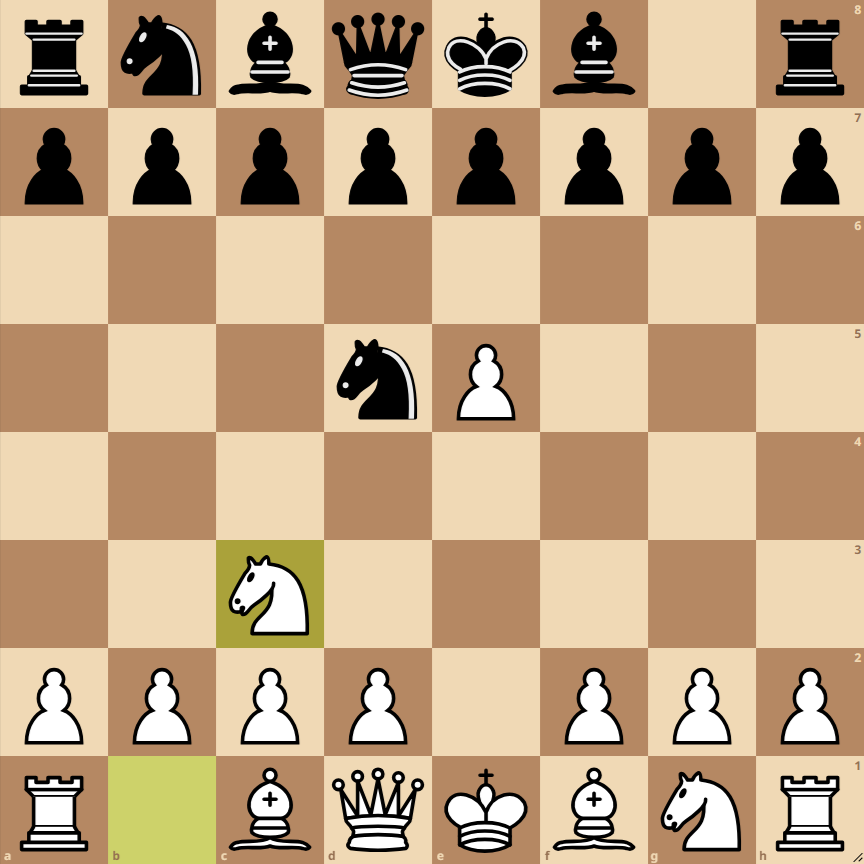How to Play the Alekhine Defense, Sämisch Attack Opening


- 1. e4: This move opens lines for the queen and the light-squared bishop, controls the center, and prepares for piece development.
- 1… Nf6: Black responds by attacking the e4 pawn and preparing for their own development. This marks the beginning of the Alekhine Defense.
- 2. e5: White advances their pawn, displacing the black knight and gaining space in the center.
- 2… Nd5: The black knight repositions to d5, a strong central square. This move also prepares for the development of other black pieces.
- 3. Nc3: White develops their knight, attacking the knight on d5 and further reinforcing control of the center.
Variations of the Alekhine Defense, Sämisch Attack Opening
Variation 1: 3… d6
Black plays 3… d6, supporting their knight on d5 and preparing to develop their dark-squared bishop. This move also aims to break the white center.
Variation 2: 3… e6
With 3… e6, black prepares to develop their light-squared bishop. Additionally, this move solidifies the position of the knight on d5.
Variation 3: 3… c6
This variation with 3… c6 further strengthens the knight’s position on d5 and prepares for a potential expansion on the queen’s side.
Alekhine Defense, Sämisch Attack: A Strategic and Tactical Analysis
The Alekhine Defense, specifically the Sämisch Attack, is an opening rich in tactical and strategic complexity, ideal for players who enjoy dynamic and slightly asymmetrical positions. After the moves 1. e4 Nf6 2. e5 Nd5 3. Nc3, the board’s position unfolds uniquely, offering opportunities and challenges for both players.
For White:
- Control of the Center: With 1.e4 and 2.e5, White establishes solid control of the center. This additional space can facilitate piece development and prepare for mid-game attacks.
- Active Piece Development: The knight on c3 supports e5 and prepares for central expansion. White’s position is ready for the swift development of their minor pieces.
- Casting Options: With control of the center, White has flexibility in choosing between kingside or queenside castling, adapting to the overall game strategy.
For Black:
- Counterattack in the Center: The Alekhine Defense relies on provoking White to advance their pawns, creating attack targets. The move …Nf6 immediately challenges the e4 pawn.
- Knight Mobility: The knight on d5 is central to Black’s strategy. It can move to c3, b6, or even e7, depending on the circumstances, each with its strategic merits.
- Flexibility in Pawn Structure: Black can choose to maintain a flexible pawn structure, adapting to White’s actions and seeking opportunities for counterattacks.
Suggested Moves:
- Nxc3: This move forces White to decide between doubling their pawns on the ‘c’ file or recapturing with a pawn. If White recaptures with the pawn, their center control weakens, but they gain a passed pawn on the ‘d’ file.
- Nb6: Retreating the knight to b6 maintains pressure on the center and prepares the possibility of c5, challenging White’s pawn structure and aiming to activate the dark-squared bishop.
- e6: A solid advance that prepares for the development of the light-squared bishop and supports the center. This move leads to a more positional game, aiming to gradually equalize and reduce the influence of White’s e5 pawn.
Conclusion: The Sämisch Attack in the Alekhine Defense offers a rich and diverse game where White seeks to exploit their space and development advantage, while Black aims to destabilize the center and look for counterattacks. The choice between Nxc3, Nb6, and e6 for Black will largely dictate the nature of the game, between sharp tactics or a more balanced positional play.

